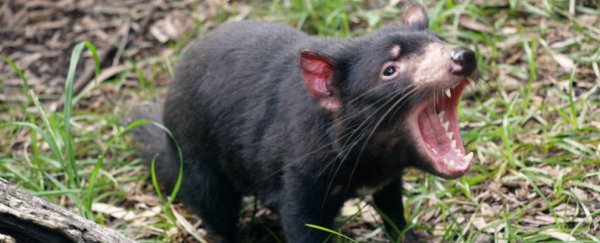Tasmanian devils (Sarcophilus harrisii) haven't existed on the Australian mainland for about 3,000 years, and are believed to have been wiped out by another native predator, the dingo.
However, researchers are now suggesting a bold plan to reintroduce the Tasmanian devil to the Australian mainland, as a way to benefit biodiversity across large areas of the country and also help protect the species from extinction.
At present the Tasmanian devil only lives in Tasmania, the island state lying to the south east of Australia, where its numbers are dwindling as a result of a contagious facial cancer. But researchers from the University of New South Wales (UNSW) in Australia say bringing the animal back to the mainland will help control invasive species such as red foxes and feral cats, which are wreaking havoc on native mammals, as well as help to bolster the devil's numbers.
The problems all started when dingoes were extensively culled on the mainland to protect livestock across the country. With dingoes out of the picture, there was no one filling the 'apex predator niche', and feral animals have since dominated the ecosystem.
But based on the results of computer modelling, the UNSW scientists think that niche could be filled by the Tassie devil, with researchers saying the animal's reintroduction could uniquely control invasive species while having a minimal impact on livestock.
"There are large areas where the dingo is gone and we need a predator who can suppress fox numbers," said Daniel Hunter from UNSW's School of Biological, Earth and Environmental Sciences, in a statement. "The devil is the obvious answer. It doesn't pose as serious a risk to livestock, and it has played a major role in stopping foxes from establishing a foothold in Tasmania."
In the first ecological assessment of its kind, the researchers found that the reintroduction of the Tasmanian devil to the Australian mainland, aside from helping to balance the ecosystem, could also assist in ensuring the survival of the species itself, by diversifying its habitat.
"Devils aren't a silver bullet, but we think that they could do a lot of good on the mainland, and this study indicates that a monitored process of reintroduction could actually work," said co-author Mike Letnic. "We need to take action to arrest the extinction crisis we have in Australia, and that requires being bold and trying something new."
The research is published in Biological Conservation.
Love science? Find out more about the world-leading research happening at UNSW Science.
